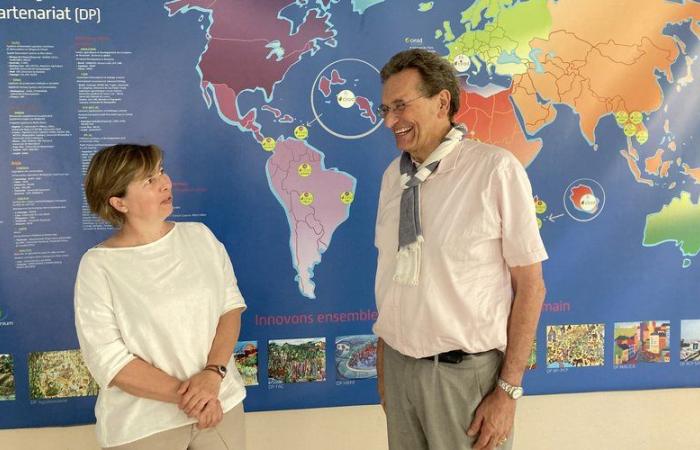CIRAD was created in June 1984 in Montpellier. Its research carried out in partnership with countries of the South has a major impact in the fields of agriculture, environment and health.
In Montpellier, it all started in 1970
“In Montpellier, since 1970, there was the Gerdat (Study and research group for the development of tropical agriculture) which brought together several institutes, recalls Vincent Fabre-Rousseau, Montpellier-Occitanie regional director of Cirad since 2018. At the time, Montpellier was in a balance with Aix and Lille to welcome this Gerdat and the 200 positions that went with it. Mayor François Delmas had obtained it to the detriment of Aix and Lille by selling off the land located to the north of the city..
CIRAD was founded in 1984
CIRAD, which succeeds Gerdat, is the result of the merger of nine technical tropical agricultural research institutes. Since 1984, there are now 500 people working in Montpellier. The creation of the Baillarguet site in 1993 was accompanied by the creation of 230 additional positions.
“CIRAD, which was built from tropical sectors on an agronomy basis, gradually evolved with two other pillars: forestry and tropical veterinary medicine, in 1994-95, explains Vincent Fabre-Rousseau. It was a huge boost to develop other partnerships, mainly abroad.”
There are 1,200 people now working in Montpellier. They now work in around forty scientific disciplines.
Work that benefits our territory
Since Covid, it has become necessary to strengthen the interaction between science and decision-making, to better face the challenge represented in particular by the acceleration of climate change.
In October 2023, an unprecedented 2023-2030 “Health Ecology” partnership agreement was signed between the City, the Metropolis and research institutes (including CIRAD). Objective: to make Montpellier a global hub in terms of “global health”.
“CIRAD is focused on the South and its mission is not necessarily at the local levelunderlines Vincent Fabre-Rousseau. But we are investing through this agreement in a project to see how to improve things for the 500,000 inhabitants of the Metropolis.”
“CIRAD’s expertise acquired in tropical zones can prove interesting. Especially since our temperate zones are experiencing climate change. We are carrying out work to adapt vines and grape varieties to drought.”
“In our greenhouses, we simulate the reaction of plants to climates that we will experience in 2050. The objective is to adapt them to water stress. We are looking, for example, at how sorghum, which was previously cultivated in Occitania, could be a crop alternative to the vine.”
“We are studying different production systems, which can use mixtures of cereals, in order to better manage water resourcesadds Alexia Prades. Through our action in the countries of the South, we have acquired expertise in water control.”
The objectives gradually evolved
“CIRAD was a scientific organization in the 80s and 90srecalls Vincent Fabre-Rousseau. Our engineers were heads of stations or plots of banana trees, rubber trees, etc. But one of our missions was also to train our partners so that they could fulfill this function. The objective was to move from scientific knowledge to finalized research (i.e. answering questions asked by the company).”
“Being from sector institutes, we are in the analysis of problemsunderlines Alexia Prades, delegate for tropical sectors in the scientific department. We seek to provide results that have an impact.”
CIRAD in figures
1,800 employees including
1,240 scientists and among them
800 researchers and doctoral students
€240 million annual budget including
60% subsidies for public service charges and
40% own resources
800 projects per year
1,200 peer-reviewed journal articles, books and book chapters including
600 co-published with partners from the South
4,200 partnerships around the world
To achieve this, more than 200 partnerships – “the DNA of CIRAD” – have been linked across the world! “Our partners welcome us in the field, mainly in tropical areas, and they come to our laboratoriesexplains Alexia Prades. We target the research questions that best answer their request. This exchange enriches us mutually.”
“We have 200 expatriate employees – 60% of whom are in Africa – and nearly 400 in the four overseas departments. The particularity of CIRAD scientists abroad is that they stay there for a long time, four years on average. It creates very strong bonds and allows you to learn to work in another environment, to integrate other working methods.”
“The second level is the partnership systems, around a theme, evaluated every five years. We have around twenty of them around the world.”
“We will have succeeded the day our southern partners have re-appropriated this activity and we will no longer be there,” summarizes Vincent Fabre-Rousseau.






